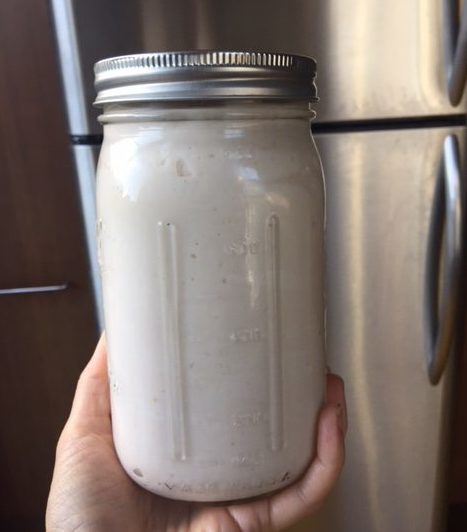There is a false belief that you can recolonize your gut with probitoics. Not true.
In reality, probiotic foods and supplements don’t move in as residents. They act more like tourists by adding diversity and boosting the local economy. Or they can act like a police force to bring law and order.
Whether probiotics serve as tourists or police depends if the bugs are dead (tourists) or alive (police).
Probiotic supplements can influence the bacterial environment in the gut even even if they are dead. But live bugs are better at cleaning things up.
If you take the wrong probiotics they may do more harm than good or be completely useless, depending on what your gut bacteria needs.
For healthy people, tourist-type probiotics can do the job of supporting an already healthy environment. But if there’s a severe imbalance, it’s more effective to introduce live bugs.
Most commerical brands of probiotics supply dead bugs. But there are a few live varieties available on the market.
Picking the right probiotic for your situation can be tricky.
For example, people with bacterial overgrowth in their small intestine, characterized by symptoms like bloating, gas, reflux or gut pain, should avoid probiotics with lactic strains such as lactobacillus.
People who struggle with yeast overgrowth do well with a species called s bouldardi, a friendly yeast-like organism that combats candida.
If you don’t suffer from small intestinal bacterial overgrowth (SIBO) you will do best with a probiotic cocktail that covers all the bacterial bases.
A mix of soil-based organisms, s. boulardii and some lactobacillus and bifido bugs. You can get dead strains of lacto and bifido bacteria from most commercial probiotics or the live versions from yogurt.
More about soil based probiotics
Bifido and lacto bacterial strains are well known, but soil-based probiotics are slowly gaining traction.
Soil-based bugs live in the soil and are extremely hearty, able to withstand hot and cold temperatures. Soil based organism also reduce symptoms of bloating, flatulence and constipation, among other anti inflammatory benefits.
Soil-based organisms work best for people with SIBO. My favorite brand is Megasporbiotic because it contains live bugs. Live bugs offer immune system support and the “policing” benefits I mentioned above.
Back before we needed to supplement with Megasporibiotic we got our soil based organisms from eating freshly picked fruits and veggies with traces of soil. These days fruits and veggies are well washed or waxed to make them more appealing to buy.
Polishing our produce has led to a missing piece of our biome.
A theory exists that autoimmune disease is on the rise because this part of our biome has been lost.
How do soil based organisms work?
Studies based out of Princeton University found that bacteria communicate with each other through chemical signals that allow them to take collective action and act as a unit. Soil based organism disrupt the communication channels of these bacterial colonies. This is called quorum sensing and allows for successful attack on vulnerable and isolated bacteria.
I share a yogurt recipe below that combines all three probiotic species mentioned above in one yogurt.
This super yogurt is a great way to stretch your probiotic budget further. A few capsules can turn into multiple dozens of servings of probiotic yogurt. Using it in a yogurt starter can make one bottle last for a year.
Megasporbiotic must be ordered by a practitioner. If you want to learn more, e-mail me through the sidebar on my website. The price is $60 plus $10 in shipping costs.
What you need
The yogurt below is diary -free and made with coconut, with added antibacterial, anti-inflammatory, anti fungal benefits.
Homemade yogurt with a custom blend of probiotics is the best way to go to cover all your probiotic bases. And it’s hard to find a coconut yogurt for sale without added sugars, gums or sketchy.
This yogurt is tasty and easy to make with a few simple tools listed below.
First, you’ll need a yogurt maker. You can get this one for under $25. You can also use an instant pot to make yogurt.
You need a high powered blender. I recommend this one because it is under $80. It pays for itself by making low FODMAP nut milk and smoothies. My favorite low FODMAP smoothie recipe is below.
This coconut opener makes opening young coconuts very easy.
This yogurt has only a few ingredients, young coconut meat, young coconut water and probiotic capsules/yogurt starter.
Young coconut are becoming easier to find. They sell them in Whole Foods and most Asian or Latino supermarkets.
You can even buy them here online but they are double the price due to cost of shipping costs.
Probiotic blend yogurt recipe
Ingredients
3 young coconuts
Probiotic blend 4 megasporbiotic capsules, 2 capsule of S. Boulardi and two tablespoons of yogurt from an unsweetened, unflavored yogurt brand (you can use commercial coconut or dairy yogurt or your last batch of homemade yogurt) All probiotics need to be opened up and the powder only is used. Throw away the capsules.
How to
Open up the top of the coconuts by cutting a small hole on top. Easiest way is with a coco jack or use a machete or sharp knife to chop it open.
Pour out the coconut water into a bowl or jug.
Scrape out the meat of all the coconuts using a spoon.
Put the coconut meat in the blender and pour in about 1/4 cup of coconut water and blend. Keep adding coconut water until the coconut meat forms a thick sauce-like consistency, like that of apple sauce.
Add in the probiotic powder and blend for 30 seconds. Also add in a few tablespoons of unflavored, unsweetened yogurt for extra strength and blend again for 30 seconds. This step should be skipped by SIBO folks.
Pour the contents of the blender into your yogurt maker and turn it on for 12 to 24 hours depending on how strong and sour you like your yogurt to taste.
That’s it.
Refrigerate your yogurt after it is finished fermenting and enjoy by the spoonful. If there are no reactions you can enjoy by the cupful.
Add in fresh berries or bananas for sweetness. Add to smoothies or take by the spoonful as your probiotic daily dose.
Bonus low FODMAP smoothie recipe:
I ate this smoothie every day for breakfast when I had SIBO, a mix of banana, berries, arugala or kale, nut milk or coconut milk, collagen and protein powder (I use this whey protein because it is grass-fed and lactose free, completely pure and free of the sugars or additives that bother most people). Blending greens makes them much easier to digest.
Smoothies are a way to add easy to digest calories if you have trouble putting on weight. You can add a dollop of this probiotic yogurt into your smoothie for added health benefits.


